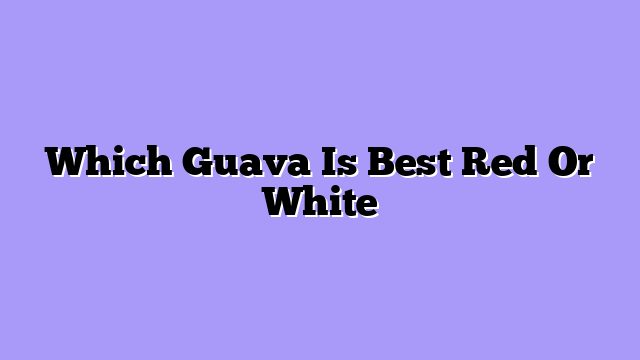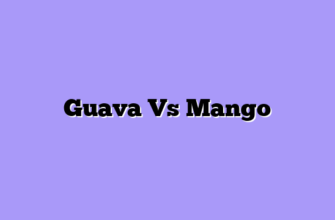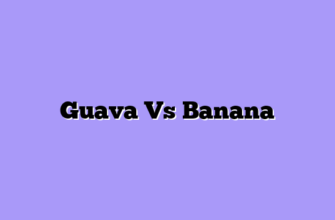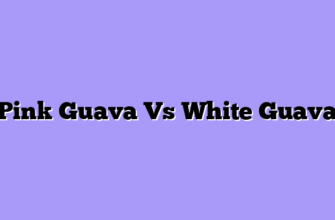You know what’s funny about farming Psidium guajava (that’s the scientific name for our beloved guava)? Just when you think you’ve mastered one variety, nature throws you a delightful curve ball. After more than a decade of cultivating what my Filipino workers call bayabas and my Indian friends refer to as amrood, I’ve developed a special appreciation for both red and white varieties of this incredible fruit.
Picture this: it’s dawn on my farm, and I’m walking through rows of guava trees, some heavy with pink-fleshed fruits, others bearing their pale white cousins. The Portuguese call them goiaba, and like proud parents, I can’t possibly choose a favorite between these two beautiful varieties. But I can certainly tell you about their unique characteristics and help you decide which might be better suited for your needs.
When visitors come to my farm, they often ask, “Anna, which one is better?” Well, that’s like asking a mother to choose between her children! Each variety, whether it’s the red guava (known as pera guayaba in Spanish-speaking regions) or the white (what my Mexican workers call guayaba blanca), has its own personality and charm.
Let me take you on a journey through the fascinating world of these tropical treasures, sharing what I’ve learned from years of getting my hands dirty in the rich Florida soil, nurturing these remarkable fruits that some call “the apple of the tropics.”
The Visual and Textural Experience
Let’s start with what catches your eye first. Red guavas, when cut open, reveal a stunning pink to deep red flesh that’s almost as pretty as a sunset. The color can range from a subtle blush pink to a rich crimson, depending on the specific variety and ripeness. It’s nature’s way of saying, “Look at me!”
White guavas (or goyavier blanc, as my French customers call them) have a creamy white to pale yellow flesh that reminds me of fresh morning dew on magnolia petals. There’s something incredibly pure and elegant about their appearance. The flesh tends to be slightly firmer than their red cousins, making them perfect for certain culinary applications.
Texture-wise, both varieties have those signature crunchy seeds scattered throughout their flesh, but here’s where it gets interesting: red guavas typically have a softer, more melting texture when fully ripe, while white guavas maintain a slightly crisp bite even at peak ripeness. It’s like comparing a ripe peach to a perfectly crisp apple – both delightful, but in their own unique ways.
The external appearance of both fruits (known as goiabeira fruits when referring to the tree in Portuguese) can be deceptively similar. This is why I always tell my farm visitors, “Don’t judge a guava by its cover!” The real magic reveals itself only when you cut into these green to yellow spheres of goodness.
Flavor Profiles and Aromatic Differences
Now, let’s talk about what really matters – the taste! Red guavas typically offer a more robust, sweet-tart flavor profile with complex berry-like undertones. Imagine the sweetness of a ripe strawberry combined with the tropical notes of a passion fruit – that’s the kind of flavor explosion we’re talking about here.

The aroma is another fascinating aspect. Red guavas typically have a stronger, more musky tropical scent that can fill a room. White guavas, on the other hand, offer a lighter, more floral fragrance that’s equally enchanting but less overwhelming.
I often tell people that choosing between red and white guavas is like choosing between different types of wine – it’s all about your personal palate and how you plan to enjoy them.
Nutritional Considerations
Let’s get scientific for a moment! Both varieties of this amazing fruit are nutritional powerhouses, but there are some interesting differences. Here’s what makes each special:
- Higher in lycopene (that’s what gives it the red color)
- Rich in vitamin C (even more than oranges!)
- Abundant antioxidants
- Good source of beta-carotene
- Higher in vitamin C than red varieties
- Lower in natural sugars
- Excellent source of dietary fiber
- Rich in potassium
Through my years of farming, I’ve noticed that health-conscious customers often lean toward white guavas for their lower sugar content, while those seeking specific antioxidant benefits might prefer the red varieties. It’s fascinating how nature provides different benefits in different packages!
Best Uses and Applications
In my experience, red guavas are the stars of the show when it comes to processing and preservation. Their natural pectin content and rich color make them perfect for jams, jellies, and preserves. The color holds beautifully through processing, creating visually stunning products that practically sell themselves at farmers’ markets.
White guavas excel in fresh applications. Their crisp texture and mild flavor make them perfect for fruit salads, smoothies, and fresh eating. They’re also fantastic in savory applications – you should try my white guava salsa recipe sometime! It’s a game-changer at barbecues.
For juicing, both varieties have their merits. Red guavas produce a beautiful pink juice that’s visually appealing and perfect for commercial products. White guavas create a more subtle, refreshing juice that’s excellent for blending with other fruits or using in cocktails.
Here’s a farming insider tip: if you’re planning to grow your own guava tree, consider your climate and intended use. Red varieties tend to be slightly more sensitive to cold but generally produce more fruit, while white varieties often show better disease resistance in my experience.
Making Your Choice
After all these years of growing both varieties, I’ve learned that there’s no definitive “better” choice – it all depends on your personal preferences and intended use. If you’re looking for a more intense, traditional tropical fruit experience with stunning color, go for red guava. If you prefer a milder, refreshing flavor with a crisp texture, white guava might be your perfect match.
Remember, whether you choose red or white, you’re getting a fruit that’s packed with nutrition and versatility. I often tell my customers it’s like choosing between gold and silver – both are precious, just different!
On my farm, I grow equal amounts of both varieties because I’ve learned that diversity is key in farming, just as it is in life. Each type brings something unique to the table, and together they create a complete guava experience that keeps my customers coming back for more.
Next time you’re at a farmer’s market or grocery store, why not try both varieties? Compare them side by side and discover your own preference. After all, that’s the beauty of farming – there’s always something new to discover and appreciate in nature’s incredible diversity.








